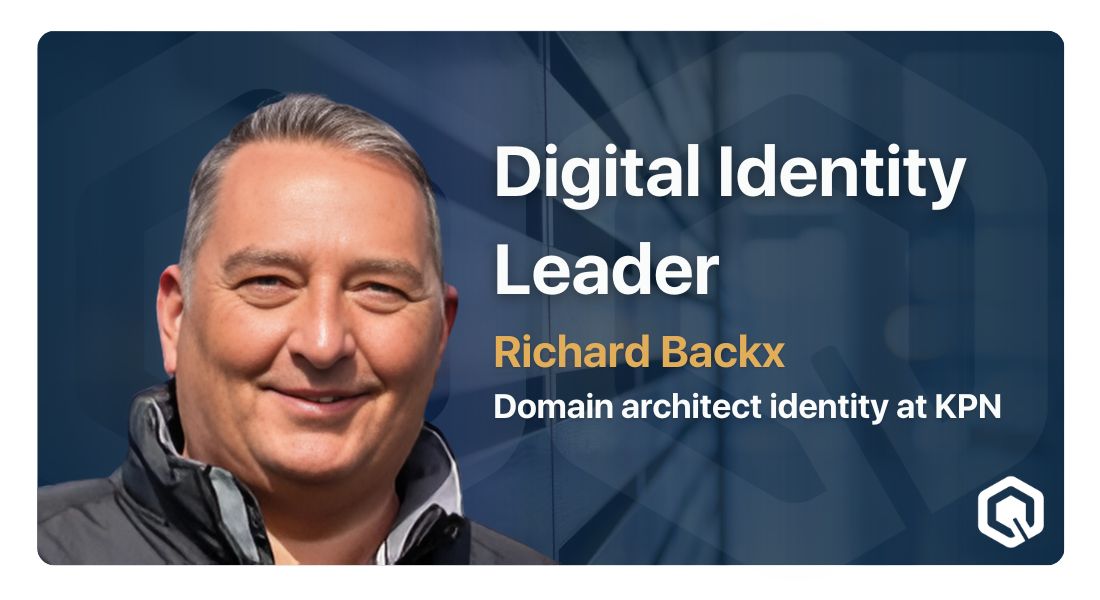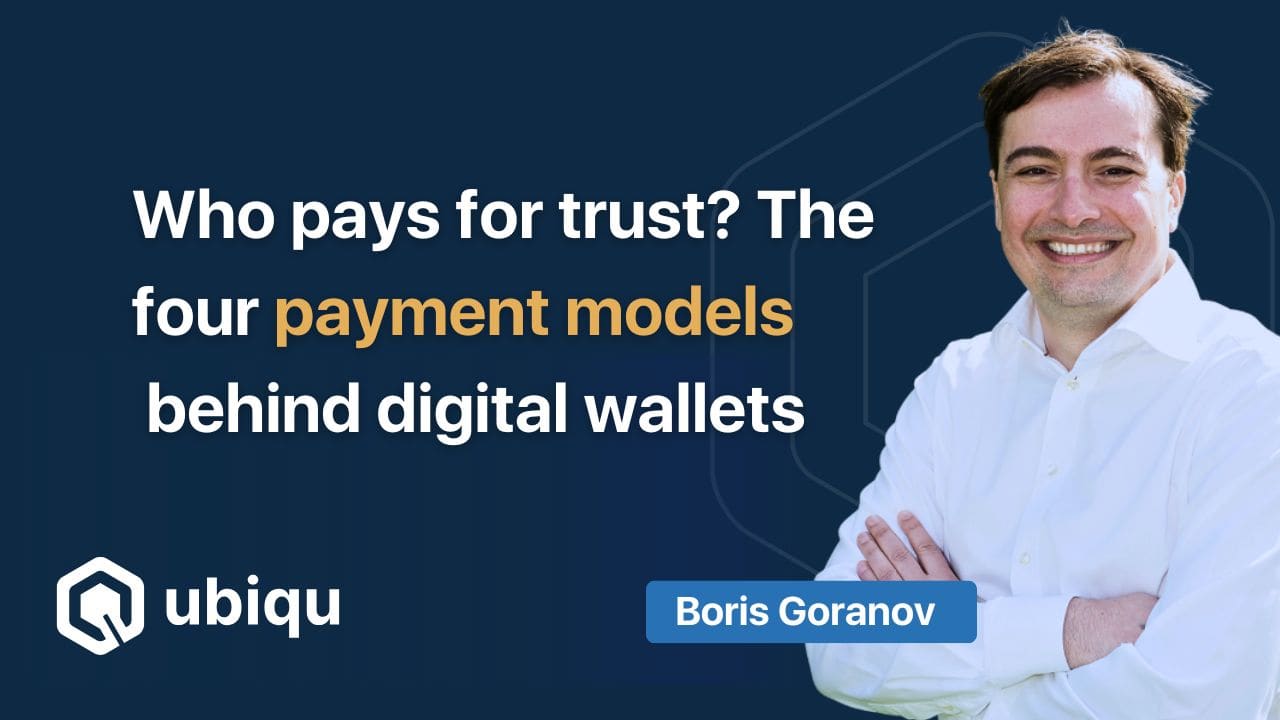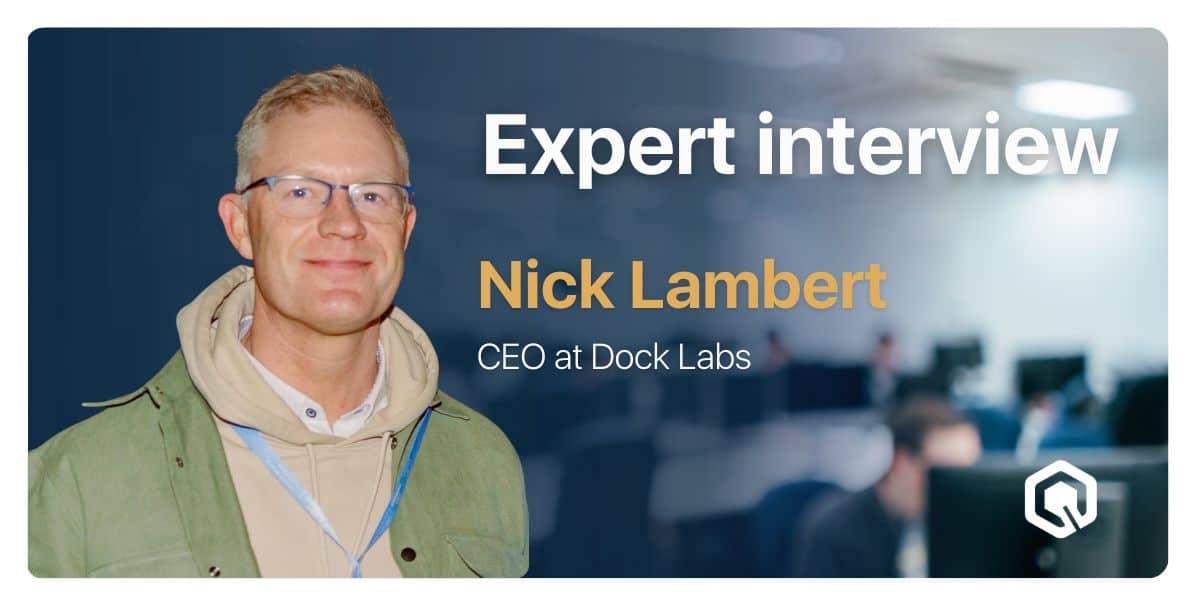“What you’re seeing now is that telecom services and trust services are converging. The qualified trust services we’ve been offering to businesses for years will soon be available to all consumers through digital wallets. This creates enormous opportunities for telcos to add value in the mass market during Europe’s digital transformation,” explains Richard Backx, domain architect identity at KPN.
We spoke with Richard about the critical role telecommunication companies will play in Europe’s digital identity transformation. As eIDAS 2.0 approaches its 2026 implementation deadline, KPN has positioned itself at the intersection of telecom and trust services, leveraging its experience as a Qualified Trust Service Provider (QTSP). Richard shared insights on how telcos are uniquely positioned to bring high-trust identity services from the business sector into the consumer market, along with real-world implementations already demonstrating the potential of digital wallets to revolutionize how citizens interact with services across the EU.
But first, we need to start with the basics. How do you explain a complex European regulation to someone who’s never heard of it? How would you explain eIDAS 2.0 to someone at a birthday party?
I rarely get asked about eIDAS 2.0 at birthday parties—most people have never heard of it. Instead, friends typically ask about my work at KPN, which gives me an opportunity to talk about the European digital identity wallet program. I find it more effective to focus on explaining the wallet concept rather than diving into the regulation’s technical name. After all, “eIDAS 2.0” doesn’t exactly spark excitement at social gatherings, but the real-world applications of digital identity do capture people’s interest.
When people ask what a digital identity wallet is, they often assume it’s just another payment app. I clarify that it’s something quite different—your personal digital remote control for managing your identity. This wallet gives you complete control over your personal information, functioning like a digital passport that’s always accessible on your smartphone. Rather than holding money, it securely stores credentials that prove who you are and what you’re entitled to access.
With the digital wallet concept now clear, how did KPN become involved with this technology, and what’s your current focus in this space?
KPN has been involved in the electronic identity and trust services space for over a decade. When the first eIDAS regulation took effect in 2014, we established ourselves as a Qualified Trust Service Provider (QTSP) and secured our position on the EU Trust List. This isn’t just a side project for us – we maintain a specialized unit dedicated exclusively to developing and delivering trust services for our business clients. The upcoming eIDAS 2.0 regulation represents the next evolution of these services, building on our established foundation.
Our vision is that digital identities will become fundamentally important under eIDAS 2.0. Since this European legislation applies to all member states, every country across the EU will be implementing digital identity wallets and trust services. What’s particularly exciting is the shift we’re witnessing: the QTSP services we’ve been providing exclusively in the B2B market—such as qualified digital signatures for notarial deeds and high-assurance identity verification—will now extend into the consumer realm. For KPN, this means preparing to scale these sophisticated trust services, which we’ve refined over years in the business market, to make them accessible to millions of European citizens.
I often say we’re standing at the threshold of Europe’s greatest digital transformation. This isn’t merely about digitizing individual companies or even entire countries—what we’re witnessing is the comprehensive digital transformation of an entire continent. The scale and impact of this shift will be unprecedented in European history.
How will this Europe-wide digital transformation actually affect everyday citizens? Can you give us a concrete example of how they’ll use these wallets?
I often use my children as test subjects when explaining these concepts. When they ask me what they’ll actually be able to do with a digital wallet, I explain that with their digital identity securely stored on their mobile device, they’ll be able to perform all kinds of transactions—from logging into services to digitally signing documents—capabilities that aren’t yet widespread in the consumer market.
The key advantage is that you’ll always have your digital identity at hand, and importantly, you maintain complete control over it. It’s personal and belongs exclusively to you. This enables you to add various credentials to your wallet as needed. For example, I tell my children that once they earn their diplomas, they’ll be able to retrieve those official credentials directly from DUO (the Dutch education agency) and store them securely in their wallet, ready to share only when and with whom they choose.
That’s the fundamental difference from our current systems—you carry your digital identity with you at all times, you can retrieve your official information directly from the institutions where it’s registered, and most importantly, you decide who you share it with. Consent truly is the magic word that defines the digital identity wallet concept.
A common example is age verification when buying alcohol or cigarettes. Currently, you hand over your entire identity card to the cashier, but with the wallet, you just confirm you’re over 18, nothing more. And you decide whether to share that information. You have control over your own data.
Another example is hotels abroad often making copies of your passport. With a digital identity wallet, that practice becomes unnecessary. The era of passwords ends, too—you’ll log in with your digital identity at the highest level of reliability. So usernames and passwords will soon be a thing of the past.
Beyond these consumer benefits, how is KPN positioned compared to other telecom providers in Europe’s digital identity landscape?
At KPN, my role sits within the business division where I work as a System Integrator. Our company occupies a somewhat unique position—we’re officially recognized as a QTSP on the EU Trust List, with a dedicated business unit focused entirely on developing and delivering trust services to enterprise clients. This specialized focus exists alongside KPN’s broader identity as both a telecommunications company and communications service provider.
What we’re seeing now is the merging of telecom services and trust services. For instance, the qualified digital signatures we currently offer to businesses will soon be available to regular consumers through their digital wallets. This creates major new opportunities for telcos. Some providers in Europe are already heading this direction by offering digital signatures in consumer wallets. Our established position as a QTSP gives us a real advantage as these sophisticated trust services move from specialized business applications into the everyday consumer market.
Speaking of QTSP status, can you explain what that actually means in simple terms?
A QTSP is a trust service provider that meets very strict compliance rules under European legislation. There are heavy requirements we must fulfill to maintain this status.
You’ve explained the concept, but how is this technology being used in practice? Can you share some real-world examples?
I can share two concrete examples. In a recent project, KPN partnered with Ubiqu to develop a digital wallet solution for a municipality focused on improving the rental housing application process. We created what we call a “tenant journey” within the wallet, where citizens can request a digital tenant card from a housing association using their verified digital identity. This card contains only the specific attributes needed for rental applications—such as income verification. When applying for housing, they can then share just these relevant credentials with the housing association through their wallet.
The major advantage is data minimization—you no longer need to reveal your entire identity. You remain anonymous where appropriate, sharing only the specific attributes needed for the transaction, such as income verification, without exposing your name or other personal information that isn’t relevant to the housing application process.
The municipality had two primary objectives with this project: minimizing unnecessary data collection and preventing discrimination in housing. By allowing applicants to verify their eligibility without revealing identifying details like their name or background, the system helps prevent situations where people might face housing discrimination based on factors like foreign-sounding names. This use case perfectly demonstrates a core principle of digital identity: you should only need to share the specific data that’s genuinely necessary for a service—nothing more.
So if you have a foreign-sounding surname, the system protects you by keeping that information hidden during the initial application stages. You only reveal what’s actually needed to qualify for housing—like your household size or income verification. This eliminates those intrusive application forms that ask for dozens of personal details that aren’t relevant to determining your housing eligibility.
Beyond fighting discrimination, this approach dramatically simplifies the process through smart data handling. You maintain complete control—your digital identity and tenant credentials stay in your wallet, and you actively choose when to share them with a housing association. No one can access this information without your explicit consent, and you decide exactly which pieces of information to share for each specific application.
That housing example shows clear benefits for individuals, but what about organizations? Do you have examples from that perspective?
Absolutely. We’re currently developing KPN Health, a specialized wallet solution for the healthcare sector. In this case, healthcare organizations issue wallets to their professionals, giving them highly secure authentication when accessing sensitive medical systems and applications. This provides stronger security than traditional username/password methods. In future iterations, these professionals will also be able to securely share patient data through the same system
KPN has created a healthcare-specific wallet that implements digital identity at the highest security level, fully compliant with eIDAS 2.0 standards. We offer this solution to healthcare organizations so their staff can digitize credentials like their UZI pass (the Dutch healthcare professional ID card) directly into their wallet. Looking ahead, other professional qualifications—such as background checks (VOGs) or medical diplomas—can also be securely stored in the same wallet.
The wallet provides healthcare professionals with secure access to medical applications and workstations across multiple systems and organizations. This creates a seamless ecosystem where their verified digital identity works consistently throughout the healthcare network.
This approach also tackles the serious problem of credential fraud in healthcare. Instead of relying on paper diplomas that can be falsified, professionals can retrieve their verified qualifications directly from authorized education institutions, store these tamper-proof credentials in their wallet, and then share them with employers who need to verify specific certifications or qualifications during hiring.
You mentioned Ubiqu when discussing the housing project. Can you tell us more about your partnership with them?
Absolutely. KPN and Ubiqu have been working together for a long time. Ubiqu is a strategic partner of KPN in digital identity and eIDAS 2.0 trust services. The collaboration has been very productive.
If we meet again in five years and developments have continued, where do you think we’ll be?
I hope to see digital identity wallets being used across all of Europe, working seamlessly regardless of which country you’re in. There’s still significant work ahead to make this vision reality, though. The EU has set 2030 as its “digital decade” target—by then, it would be transformative if citizens could use their digital identity for both public and private services, online and offline, anywhere in the European Union.
This transformation won’t happen on its own. Success depends on close collaboration between governments, telecom providers, and other private companies working together. We need to experiment, learn from practical implementations, and develop a shared understanding of what this new digital infrastructure means for both individual countries and Europe as a whole. The potential benefits are enormous, but only through genuine partnership can we successfully implement this ambitious vision across the continent.


